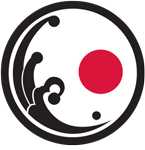Asian Arts Council 2015-2016 General Meeting Lectures
Each month the Asian Arts Council presents a program featuring a distinguished scholar, curator, collector or Asian arts enthusiast of note. We meet the last Thursday of the month in the Museum’s Boardroom at 1:00 p.m. and begin with a brief business meeting before the lecture. Meetings are free for AAC members, only $10 for Museum members, $12 for non-members and $8 for students.
Archived lecture schedules
Click on a date line below for a lecture summary from the Asian Arts Council Newsletter
Jul. 30 - 1:00 p.m. Textiles for the Head: Utility, Identity, Authority Christine Brown, Collector & Traveler
AAC Newsletter – Aug. 2015, p 2 Lecture Flyer
Christine Brown illustrated a wide array of headdresses from around the world in her talk, Textiles for the Head: Utility, Identity, Authority. Her expertise began with her degree in Anthropology, her service in the Peace Corps in West Africa, and having lived in many countries during her career with the U.S. Agency for International Development. The variety of head coverings worn in different cultures carry meanings far beyond the mere functional. They can proclaim wealth or status, reveal or conceal identity, announce marital status or availability, identify group affiliation or geographic location, celebrate marriage and birth or mourn a death, attract good fortune or protect from malevolent forces.
for the Head: Utility, Identity, Authority. Her expertise began with her degree in Anthropology, her service in the Peace Corps in West Africa, and having lived in many countries during her career with the U.S. Agency for International Development. The variety of head coverings worn in different cultures carry meanings far beyond the mere functional. They can proclaim wealth or status, reveal or conceal identity, announce marital status or availability, identify group affiliation or geographic location, celebrate marriage and birth or mourn a death, attract good fortune or protect from malevolent forces. 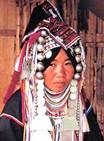 Designs were embellished with embroidery or applique, cowry shells, coins, buttons, beads, plant material, seeds, animal hair, claws or horns, and even human hair. Some designs depicted a tree of life motif, animals or birds or geometric patterns. Particular colors were used to denote age, status, rank or authority. Many of the head coverings included ear flaps, face veils or braid covers, and some extended over the shoulders, to the waist or the ankles. Following the presentation, Christine showed some examples that she has collected and some that members had acquired during their travels, affording everyone a close examination of the meticulous workmanship and creative designs of these beautiful examples of other cultures.
Designs were embellished with embroidery or applique, cowry shells, coins, buttons, beads, plant material, seeds, animal hair, claws or horns, and even human hair. Some designs depicted a tree of life motif, animals or birds or geometric patterns. Particular colors were used to denote age, status, rank or authority. Many of the head coverings included ear flaps, face veils or braid covers, and some extended over the shoulders, to the waist or the ankles. Following the presentation, Christine showed some examples that she has collected and some that members had acquired during their travels, affording everyone a close examination of the meticulous workmanship and creative designs of these beautiful examples of other cultures.
Aug.27 - 1:00 p.m. Gale, Hill, Clark, Burke: Treasures of Japanese Art at the Minneapolis Institute of Arts Andreas Marks, Ph.D., Mary Griggs Burke Curator of Japanese and Korean Art and Director of the Clark Center for Japanese Art at the Minneapolis Institute of Arts
AAC Newsletter – September 2015, p 2-3 Lecture Flyer
Once again, one of our favorite speakers, Dr. Andreas Marks, presented an entertaining and informative lecture, 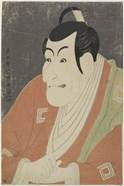 Gale, Hill, Clark, Burke: Treasures of Japanese Art at the Minneapolis Institute of Arts (MIA), which focused on some of the major donors of Japanese art to the MIA, where he is Curator of Japanese and Korean Art and Director of the Clark Center for Japanese Art. The MIA has one of the foremost collections of Japanese and Korean art, comprising almost 8,000 works displayed in 16 galleries. Nearly half makes up a comprehensive collection of ukiyo-e Japanese woodblock prints. A bequest by Richard Pillsbury Gale included 57 paintings and 206 prints, plus several prints by the highly regarded, but mysterious artist Toshusai Sharaku, about whom little is known.
Gale, Hill, Clark, Burke: Treasures of Japanese Art at the Minneapolis Institute of Arts (MIA), which focused on some of the major donors of Japanese art to the MIA, where he is Curator of Japanese and Korean Art and Director of the Clark Center for Japanese Art. The MIA has one of the foremost collections of Japanese and Korean art, comprising almost 8,000 works displayed in 16 galleries. Nearly half makes up a comprehensive collection of ukiyo-e Japanese woodblock prints. A bequest by Richard Pillsbury Gale included 57 paintings and 206 prints, plus several prints by the highly regarded, but mysterious artist Toshusai Sharaku, about whom little is known.
Louis W. Hill, Jr., the son of a railroad baron, was a state legislator, and the first to participate in the Sister City Program of President Eisenhower, founding the St. Paul/Nagasaki Sister City relationship in 1956. Of 2,500 Japanese works he gave to the MIA, one is a rare version of Utagawa Hiroshige’s woodblock print, Kanbara: Night Snow.
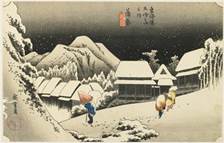
In 2013 over 1,800 works came into the MIA from Elizabeth and Willard “Bill” Clark, whose passion for Japanese art encompassed prints, scrolls, screens, ceramics, lacquerware and bamboo sculptures. An exceptional and rare
wood sculpture is the 13th century Daitoku Myoo, the Wisdom King of Awe-inspiring Power, a wrathful deity devoted to helping the devotee to overcome earthly passions, thus aiding enlightenment.
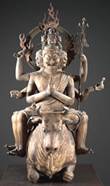 Mary Griggs Burke Collection, considered the finest private collection of its kind outside of Japan.
Mary Griggs Burke Collection, considered the finest private collection of its kind outside of Japan. 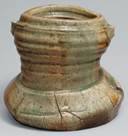 She was born in 1916 in St. Paul, was raised there, and maintained a lifelong association with the city and its cultural institutions, but spent her adult life in New York City. When the collection outgrew the space in their Manhattan apartment, she and her husband acquired an adjacent apartment in which to display selected objects in an appropriately harmonious Japanese-like setting. Her extraordinary collection was designated to be divided between the MIA and the Metropolitan Museum of Art.
She was born in 1916 in St. Paul, was raised there, and maintained a lifelong association with the city and its cultural institutions, but spent her adult life in New York City. When the collection outgrew the space in their Manhattan apartment, she and her husband acquired an adjacent apartment in which to display selected objects in an appropriately harmonious Japanese-like setting. Her extraordinary collection was designated to be divided between the MIA and the Metropolitan Museum of Art. 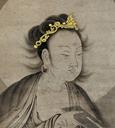 An exhibition opening September 27 at the MIA will feature 175 objects from her bequest ranging from the prehistoric era to the late 1800s. Some of the treasured objects include a misshapen Momoyama period (16-17th century) stoneware water vessel, prized for use in the tea ceremony; a 15th century hanging scroll by Kichizan Minzo depicting Monju Bosatsu (the bodhisattva of wisdom, Manjushri); a 15th century Muromachi period hanging scroll, Deer Mandala of the Kasuga Shrine showing five deities in a disc above the deer; and a pair of 18th century screens of Ishida Yutei, Flock of Cranes.
An exhibition opening September 27 at the MIA will feature 175 objects from her bequest ranging from the prehistoric era to the late 1800s. Some of the treasured objects include a misshapen Momoyama period (16-17th century) stoneware water vessel, prized for use in the tea ceremony; a 15th century hanging scroll by Kichizan Minzo depicting Monju Bosatsu (the bodhisattva of wisdom, Manjushri); a 15th century Muromachi period hanging scroll, Deer Mandala of the Kasuga Shrine showing five deities in a disc above the deer; and a pair of 18th century screens of Ishida Yutei, Flock of Cranes.
Sep. 24 - 1:00 p.m. Mysterious Moon Myths: Behind the Chinese Moon Festival Alex Stewart, Ph.D., Senior Coordinator of Education and Exhibits, San Diego Chinese Historical Museum; Lecturer, Department of Anthropology, UCSD
AAC Newsletter – October 2015, p 2 Lecture Flyer
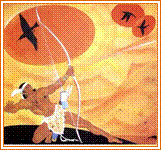 Dr. Alex Stewart, Senior Coordinator of Education and Exhibits at the San Diego Chinese Historical Museum presented a lively description of the many Mysterious Moon Myths: Behind the Chinese Moon Festival.
Dr. Alex Stewart, Senior Coordinator of Education and Exhibits at the San Diego Chinese Historical Museum presented a lively description of the many Mysterious Moon Myths: Behind the Chinese Moon Festival.
One version of the tale says the people once suffered under the unbearable heat of ten suns until the heroic archer Hou Yi shot down nine of them with his bow and arrows. In gratitude, the people proclaimed him king and he married the beautiful Chang E. He later becomes a tyrant, travels to the Kunlun Mountains and obtains the elixir of immortality from the Queen Mother of the West. To save the world from eternal tyranny, Chang E seizes the elixir and drinks it herself, causing her to float up to the moon where she dwells forever, and Hou Yi is reduced to gazing up at the full moon each month to see his beloved. Variations on this story have a repentant Hou Yi build her a palace on the moon and/or deliver her pet rabbit, which becomes the Jade Rabbit of the moon.
In other versions there is a toad, a three-legged crow or a woodcutter named Wu Gang who endlessly tries to chop down a perpetually regenerating cassia tree. The basic myth dates back 3,000 years to the Shang and Zhou dynasties, but the Moon Festival is traced to the Northern Song dynasty (10th-12th century). Viewing the myths philosophically, they are sometimes considered to illustrate the Daoist acceptance of one’s fate; a lament for the fickleness of love; or punishment for disobedience. The pairing of the toad and the rabbit or gods and goddesses may allude to yin and yang, the cosmic forces that are opposite yet complimentary.
Oct. 29 - 1:00 p.m. Gagaku: Traditional Music of the Japanese Imperial Court Robert Garfias, Ph.D., Ethnomusicology, Department of Anthropology , UCI
AAC Newsletter – November 2015, p 2 & 3 Lecture Flyer
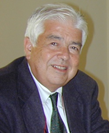 Robert Garfias’ engaging lecture, Gagaku: Imperial Court Music of Japan was a rare opportunity for AAC members to experience the music of what has been described as, “the oldest continuous orchestral music in the world today.” Over the centuries this music has been notated, preserved and handed down by professional court musicians. Under the auspices of the Imperial Court -- today the Music Department of the Imperial Household -- the musicians themselves serve as a living tradition using notation that has survived centuries.
Robert Garfias’ engaging lecture, Gagaku: Imperial Court Music of Japan was a rare opportunity for AAC members to experience the music of what has been described as, “the oldest continuous orchestral music in the world today.” Over the centuries this music has been notated, preserved and handed down by professional court musicians. Under the auspices of the Imperial Court -- today the Music Department of the Imperial Household -- the musicians themselves serve as a living tradition using notation that has survived centuries.The music of Japan was influenced greatly by musics of China and Korea. It was during the Heian period (794-1180), a period of great peace, refinement and the high point of literary development, that the tradition of court music was established. It was during this period that Japan was closed to the outside world, and outside cultural influences, until 1868.
Gagaku is performed at imperial court functions/secular events. The instruments number seven and include the biwa, koto, sho (17 pipes that provide harmony) and various drums. The music itself is very, very slow paced. As Dr. Garfias pointed out, if the emperor’s life is forever, what’s the rush? The rhythmic patterns of gagaku are formalized with a superimposed, staggered melody. This results in very complicated patterns that are difficult for listeners to discern. Westerners listen to gagaku in fragments and rarely, if ever, hear a full performance. While playing several examples for us, Dr. Garfias “conducted” so that we could “see” the beginning and endings of musical phrases.
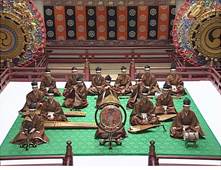 Into his lecture Dr. Garfias wove the strands of Shintoism as well as the colors, patterns and beliefs that inform Japanese culture and permeate the performance practices and attire of the musicians. Although ancient and formal, gagaku is not static. Of all Asian music, Japanese gagaku is the most studied by western composers. Its impact has been formidable. Dr. Garfias recounted his experience of receiving a phone call from a former student, architect Frank Gehry, requesting his assistance in bringing an ensemble from Japan to perform at Disney Hall.
Into his lecture Dr. Garfias wove the strands of Shintoism as well as the colors, patterns and beliefs that inform Japanese culture and permeate the performance practices and attire of the musicians. Although ancient and formal, gagaku is not static. Of all Asian music, Japanese gagaku is the most studied by western composers. Its impact has been formidable. Dr. Garfias recounted his experience of receiving a phone call from a former student, architect Frank Gehry, requesting his assistance in bringing an ensemble from Japan to perform at Disney Hall. In addition to our listening experience of the music, Dr. Garfias presented images taken during his research in Japan over many years. In so doing he generously shared his knowledge, insights and reflections with a most appreciative audience.
Dec. 01 - 11:00 a.m. Heritage Luncheon Korean art specialist, Robert D. Mowry, Ph.D.
AAC Newsletter – January 2016, p 2 & 3 Luncheon Invitation
In December the AAC’s Annual Heritage Luncheon in the Prado’s grand ballroom provided a beautiful setting for devotees of Asian art to begin the holiday season. Providing their creativity and expertise were Luncheon Co-Chairs Laurel Holloway, Courtenay McGowen, Kathleen Suros and Pat Winter. Gordon Brodfuehrer generously provided the wine, and Courtenay McGowen and Kathleen Suros designed, created and underwrote the attractive centerpieces.Our distinguished speaker, Robert D. Mowry, brought his wealth of knowledge to a discussion of Korean ceramics in his presentation, White Slip: The Essence of Korean Buncheong Ware. He began with an overview of Korean art beginning with its formative phase in the late Three Kingdoms (57 BCE-668) and Unified Silla (668-935) periods through its maturation in the Goryeo (918-1392) period when it developed the innovative inlaid
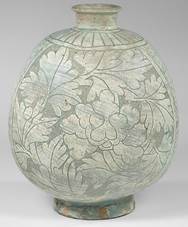
and sgraffito design
Korea, late 15th C.,
Met. Museum 1986.305
Although the antecedents of their pottery can be traced to China, the Koreans absorbed the styles and techniques, then made wares that were uniquely their own. Throughout its history, the kingdoms of the Korean peninsula sustained invasions from both China and Japan. Nevertheless, the technical skills that Korea developed produced distinctive pottery that China held in the highest esteem, and prompted Japan to kidnap thousands of Korean potters in order to learn their more advanced technology.
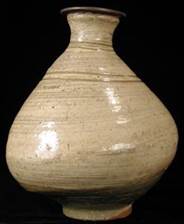
Buncheong stoneware grew out of the earlier inlaid celadon ceramics of the Goryeo period, and flourished during the 15th and 16th centuries of the Joseon dynasty. Buncheong ware is distinguished by a white slip (clay and water mixture) that is either dipped or brushed onto the clay surface, then patterns are inventively carved, stamped or incised through the slip before the application of a transparent greenish glaze and, finally, fired. Stamped or incised designs are made more prominent by filling them in with a black or white pigment before the final glaze. Sometimes a special technique of reverse sgraffito is used to carve away the while slip background from a design to make it stand out in low relief. Spontaneous designs of lotus or fish are achieved by painting on top of the white slip with an iron-brown pigment which, when fired, results in a dark brown or black design. The key to buncheong ware’s captivating charm is its unpretentious spontaneity and a whimsical, rustic or uneven appearance.
Jan 28 - 1:00 p.m. Smoking ‘The Rat’ and Saving the Nation: Early 20th Century Chinese Display Advertising and the rise of ‘Commercial Warfare’ David Fraser, Ph.D., Asian Survey, managing editor, UCB
AAC Newsletter – February 2016, p 2 & 3 Lecture Flyer
In his presentation, Smoking 'The Rat' and Saving the Nation: Early 20th Century Chinese Display Advertising and the Rise of 'Commercial Warfare,' Dr. David Fraser explored a diverse gamut of local and national influences on early 20th century China.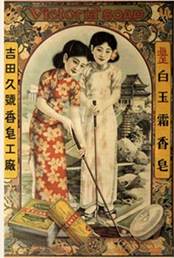 During the final days of the Qing dynasty, China was known to the world as “the sick man of Asia” because of corruption in the government, foreign encroachment and a debilitating lack of leadership. The world was rapidly modernizing and advances in printing technology resulted in a robust advertising industry in Shanghai that promoted the latest new products and lifestyles using four-color lithographs for calendars and magazines. Due to the foreign concessions established in Shanghai, it was an international city that was being compared to Paris or New York. Much as today, businesses were eager to tap the large, new market of potential consumers. The British-American Tobacco Co. recruited top-flight local artists to produce yuefenpai or “calendar posters” in gorgeous color featuring beautiful women smoking brands such as ‘The Rat’ or ‘My Dear’ cigarettes. Some cigarettes were even advertised as beneficial for asthma. The calendar posters often depicted pretty women dressed in Western styles showing bare arms or legs, doing ‘modern’ things such as riding a bicycle or playing golf, or in a pastoral scene
with both Chinese and Western references. Exploiting the visual and emotional impact of poster art, advertisers used goods to sell nationalism, and nationalism to sell goods. Some competitors made a direct, nationalist appeal to buy Chinese goods rather than foreign products. The conclusion drawn by Dr. Fraser was that modernization was a unifying factor for China.
During the final days of the Qing dynasty, China was known to the world as “the sick man of Asia” because of corruption in the government, foreign encroachment and a debilitating lack of leadership. The world was rapidly modernizing and advances in printing technology resulted in a robust advertising industry in Shanghai that promoted the latest new products and lifestyles using four-color lithographs for calendars and magazines. Due to the foreign concessions established in Shanghai, it was an international city that was being compared to Paris or New York. Much as today, businesses were eager to tap the large, new market of potential consumers. The British-American Tobacco Co. recruited top-flight local artists to produce yuefenpai or “calendar posters” in gorgeous color featuring beautiful women smoking brands such as ‘The Rat’ or ‘My Dear’ cigarettes. Some cigarettes were even advertised as beneficial for asthma. The calendar posters often depicted pretty women dressed in Western styles showing bare arms or legs, doing ‘modern’ things such as riding a bicycle or playing golf, or in a pastoral scene
with both Chinese and Western references. Exploiting the visual and emotional impact of poster art, advertisers used goods to sell nationalism, and nationalism to sell goods. Some competitors made a direct, nationalist appeal to buy Chinese goods rather than foreign products. The conclusion drawn by Dr. Fraser was that modernization was a unifying factor for China.Feb 25 - 1:00 p.m. An Upcoming Decade: Korean Art and the LACMA / Hyundai Partnership Virginia “Ginny” Moon, Assistant Curator of Korean Art at LACMA
AAC Newsletter – March 2016, p 2 Lecture Flyer
Virginia “Ginny” Moon, Assistant Curator of Korean Art at the Los Angeles County Museum of Art presented a tantalizing array of future Korean art exhibits that will result from the recent partnership between LACMA and The Hyundai Motor Company. She outlined the paucity of interest in Korean art by museums, the public and even in Korea until quite recently. Art history has only been studied in Korea since the 1980s.The first exhibition of any kind in the United States was photographs from the Korean War at MOMA in New York in 1951. The first comprehensive exhibition of Korean art, spanning 2000 years, was shown at the National Gallery of Art in Washington D.C. in 1957. 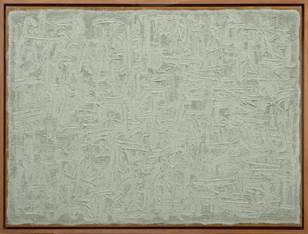
The growth of interest in Korean art in recent years has been supported by corporate sponsorship of museums and vigorous bidding at auction, especially for tansaekhua canvases of the 1970s. Tansaekhua, literally, one color painting, is a style of neutral color, monochromatic, abstract painting that emphasizes texture, materiality and process. Future planned exhibitions at LACMA include a history of calligraphy in Korea for 2018; an exhibition on “modern” Korean art during the time of occupation and then, war from 1910-1955; and an exhibit of contemporary visual art in 2022.
Mar 31 - 1:00 p.m. Korean Traditional Furniture: From the Hermit Kingdom to the Land of the Midnight Sun Lyndel King, Director of the Weisman Art Museum
AAC Newsletter – April 2016, p 2 Lecture Flyer
Dr. Lyndel King, Director of the Weisman Art Museum, discussed its superb collection of traditional Korean furniture, a bequest of Dr. Edward Reynolds Wright Jr. in 1988, that has been described as “the best outside of Asia.” 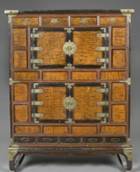
WAM 1987.22.13
Apr 28 - 1:00 p.m. Contemporary Asian Art At the Asian Art Museum, San Francisco Karin Oen, Assistant Curator of Contemporary Art at the Asian Art Museum in San Francisco
AAC Newsletter – May 2016, p 2 Lecture Flyer
An illuminating review of the “Multiplicity and Diversity of Contemporary Art from Asia” was presented by Karin Oen, Ph.D., Assistant Curator of Contemporary Art, Asian Art Museum, San Francisco. The artists discussed often combine classical training with video and digital technology to explore the interactions of East and West, and to express their ideas in a new medium. One of the works Dr. Oen showed was of Korean artist, Nam June Paik, called TV Buddha, an ancient statue of a meditating Buddha seated in front of a TV image showing the Buddha contemplating himself in a perpetual closed-circuit loop.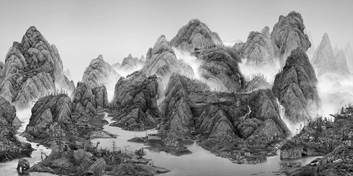
May 26 - 1:00 p.m. Exploration and Discovery: The Drumrights & their Chinese Painting Collection at The Museum Ping-Hui Ku, Asian Arts Council Study Group
AAC Newsletter – June 2016, p 2 Lecture Flyer
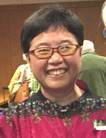
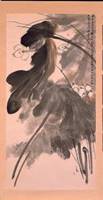
Jun 30 - 1:00 p.m. UFOs, Peace Scrolls and Vertical Ponds: New Expressions in Contemporary Origami Meher McArthur, Asian art curator, author and educator
AAC Newsletter – July 2016, p 2 Lecture Flyer
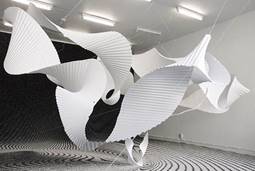
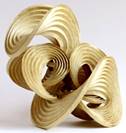
Suggesting both the benefits and harm inherent in money, Sipho Mabona created a vaguely threatening swarm of locusts using uncut sheets of $1 bills. An installation piece called Vertical Pond by scientist-turned-origami artist Robert Lang, arrays 60 gravity-defying koi swimming on a wall. The exhibition Meher McArther curated, Above the Fold: New Expressions in Origami, featuring these and other cutting-edge artists, is now on display through August 21 at the Japanese American National Museum in Los Angeles.

